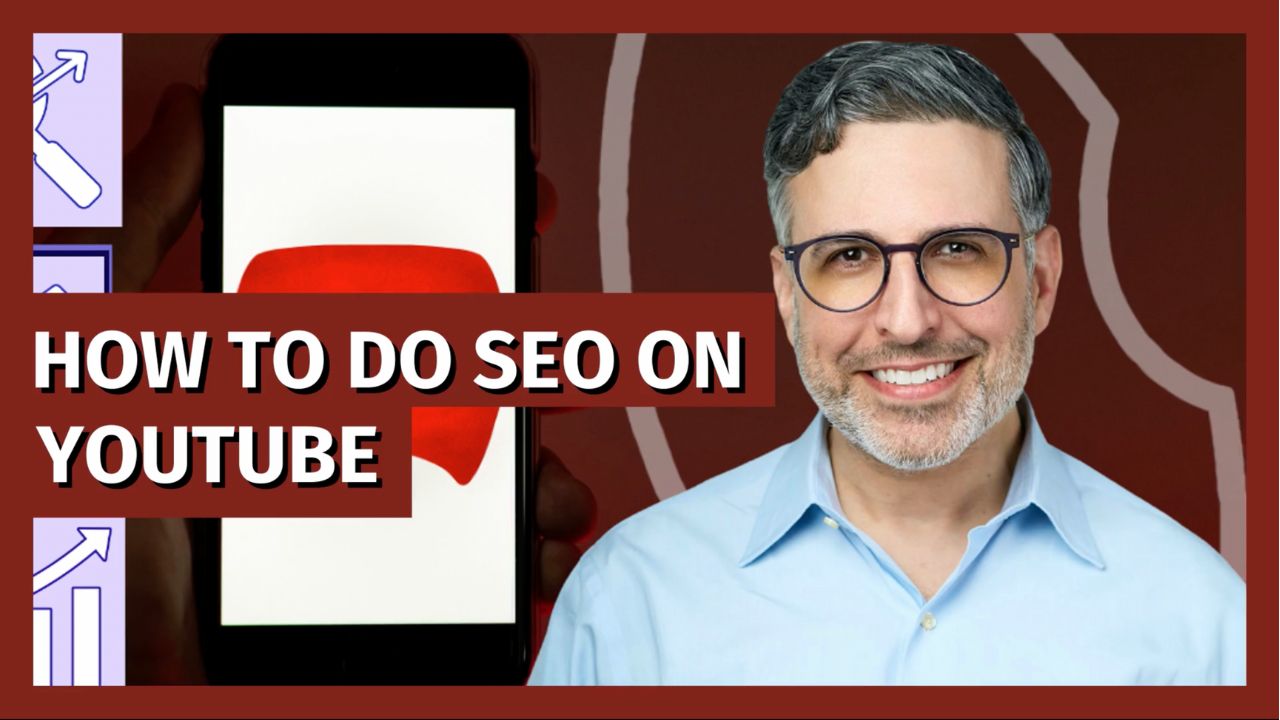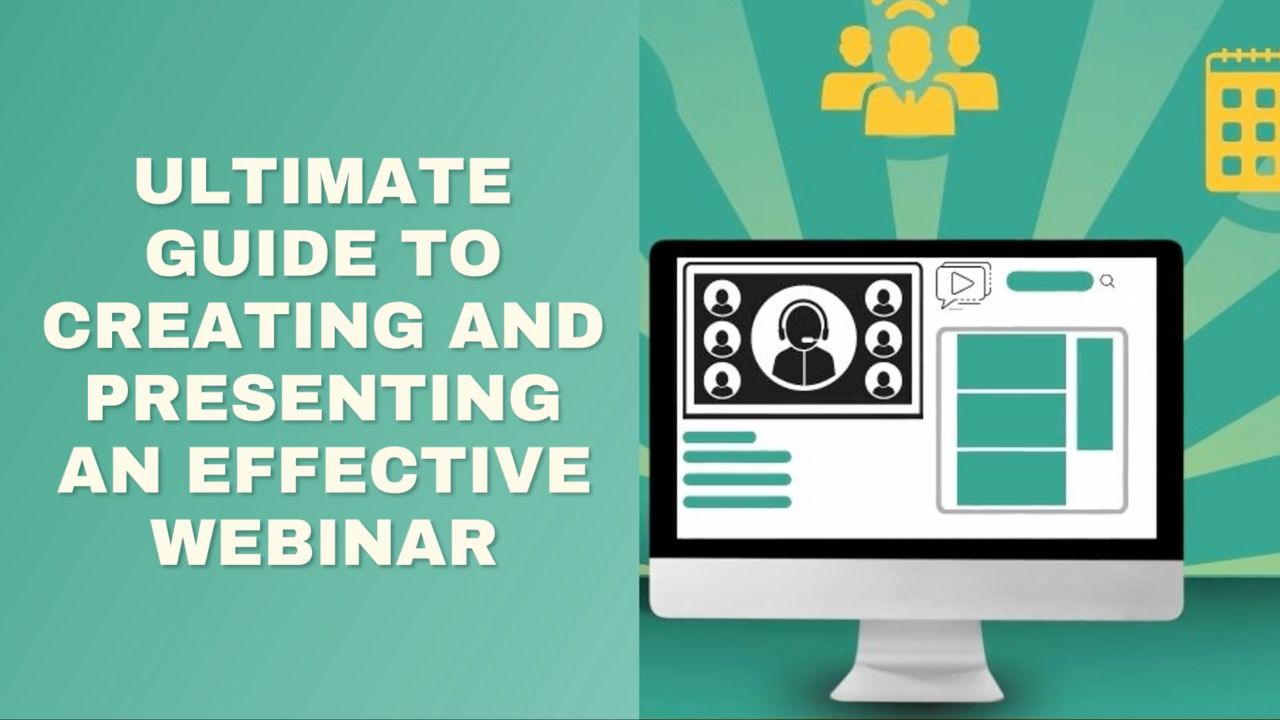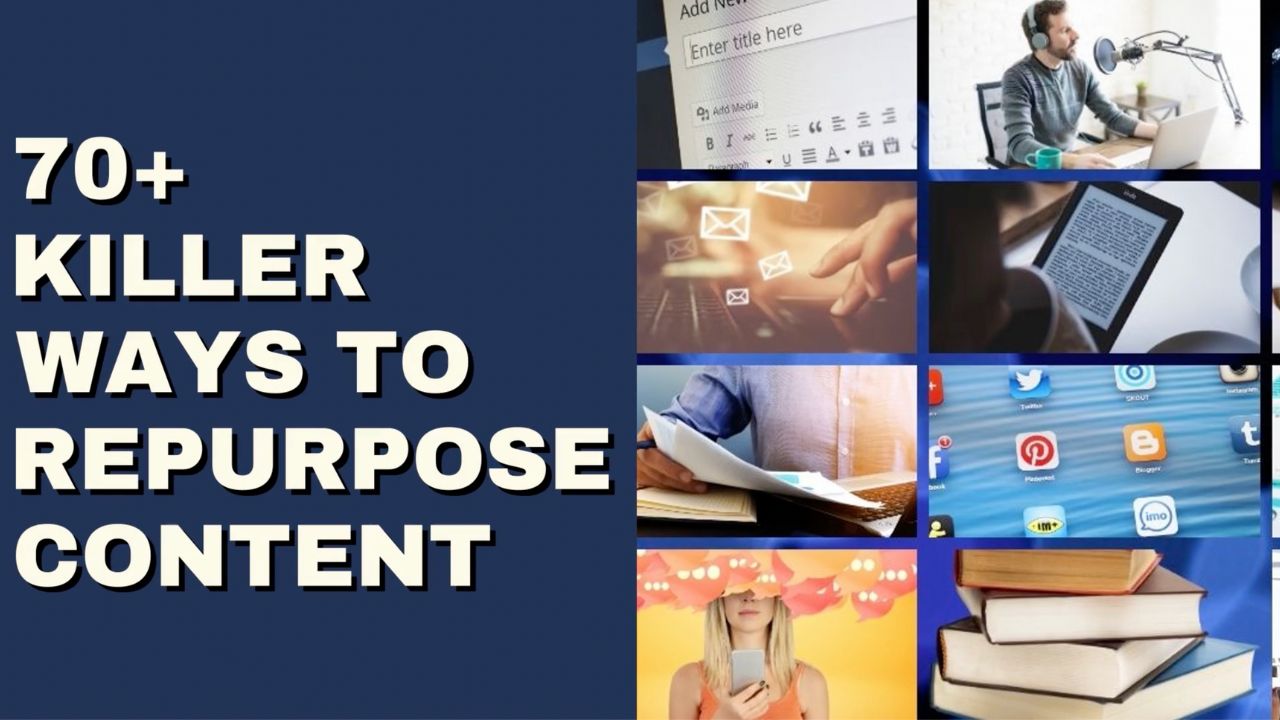Welcome to the dynamic world of YouTube, where videos are not just viewed but strategically optimized to maximize visibility and engagement.
As the second largest search engine, mastering SEO on YouTube is essential for any marketer looking to enhance their brand's digital presence.
Whether you’re aiming to boost traffic, increase brand awareness, or engage with a wider audience, understanding the nuances of YouTube SEO is your gateway to success.
In this comprehensive guide, we’ll dive into the core elements of YouTube SEO, from the basics of algorithm-friendly strategies to advanced tactics like keyword optimization and viewer engagement.
We'll equip you with actionable insights and step-by-step instructions to ensure your videos not only reach their target audience but also captivate them.
Ready to transform your YouTube channel into a viewer magnet?
Let’s get started!... 🚀
Understanding YouTube SEO
YouTube SEO might seem like a familiar concept if you're versed in traditional search engine optimization, but it operates with its unique twists.
Here’s what makes it distinct and why it’s crucial for your video marketing success.
Algorithm-Driven Visibility
Unlike standard web SEO, which largely hinges on Google's algorithms, YouTube SEO focuses on factors that YouTube's algorithm prioritizes to rank videos.
These include:
- Video content quality—high-quality, engaging content that meets viewers' needs.
- Metadata relevance—this encompasses your video titles, descriptions, and tags that should be optimized for relevant keywords.
- User engagement metrics—likes, comments, shares, and the amount of time viewers spend watching your videos.
Key Components of YouTube SEO
- Metadata—every piece of text accompanying your video can impact your rankings. This includes titles, descriptions, and tags that should be strategically crafted with keywords.
- Engagement—youtube prioritizes videos that engage viewers, evident from metrics like watch time, view count, likes, and comments.
- Thumbnail and video quality—first impressions matter. A compelling thumbnail can drastically increase your click-through rate, while high-definition video keeps viewers hooked.
While traditional SEO focuses on driving traffic via keywords and backlinks, YouTube SEO is more about engaging an audience through compelling video content and ensuring your videos are discoverable through optimized metadata and engaging thumbnails.
Always keep YouTube’s algorithm in mind, which favors viewer retention and engagement. The longer you can keep viewers interested, the better your videos will rank.
By understanding these core elements, you can tailor your content to not only please your audience but also rank favorably on YouTube, making your content a double threat of engaging and searchable.
Keyword Research for YouTube
Unlocking the potential of your YouTube channel starts with effective keyword research.
Keywords are the linchpin in aligning your content with what your audience is actively searching for.
Here’s how you can pinpoint the right keywords to boost your video’s SEO:
1. Start with the YouTube Search Bar
- Autocomplete feature—as you type in the search bar, YouTube suggests popular searches related to your query. These suggestions are a goldmine for identifying what users are looking for.
- Tip—jot down repeated keywords and phrases; these are likely high-traffic areas worth targeting.
2. Leverage Google Trends:
- Compare keywords to see their search volume and trends over time, specifically under the YouTube search option.
Look for upward trends or consistent interest over time to choose sustainable keywords that promise long-term traffic.
3. Utilize dedicated SEO tools:
- TubeBuddy and VidIQ—these platforms offer in-depth insights into keyword competitiveness, search volume, and related queries.
Use these tools to get recommendations on long-tail keywords, which often have lower competition and can be easier to rank for.
4. Keyword optimization:
- High search volume vs. low competition—aim for a balance between popularity and competitiveness. Keywords that are too competitive might be challenging to rank for, especially for newer channels.
Instead of "fitness," target "home fitness tips for beginners" to narrow down the competition.
5. Evaluate and iterate:
- After selecting your keywords, monitor your video performance to see if those keywords are drawing traffic.
- Adjust as needed—if certain keywords aren’t performing, tweak your approach based on audience engagement and feedback.
By conducting thorough keyword research and strategically incorporating these keywords into your video titles, descriptions, and tags, you set the stage for enhanced visibility and engagement on YouTube.
Remember, the goal is to think like your viewer; what would they type into that search bar to find your content? 🎯
Optimizing Video Titles
Crafting the perfect title for your YouTube video is more art than science.
It strikes a balance between creativity and strategic SEO practices to ensure your content not only draws attention but also ranks well.
Here's how to refine your video titles for maximum impact:
1. Start with your keyword:
Place your primary keyword towards the beginning of the title to emphasize its importance to the search algorithms.
If your keyword is "beginner yoga tips," a strong title could be "Beginner Yoga Tips: 5 Essential Poses to Get Started."
2. Keep it concise and clear:
- YouTube titles are truncated after about 60 characters in search results, so front-load the most important information.
Titles that are direct and to the point tend to perform better.
Viewers should understand what the video is about with just a glance.
3. Invoke curiosity:
- Titles that spark curiosity can increase click-through rates. However, make sure the content delivers on the title’s promise—no clickbait!
"The Secret to Perfect Cookies Every Time—Revealed!"
4. Use numbers and lists:
- Numbers break monotony and set clear expectations. Videos titled with lists (e.g., "Top 10...," "5 Ways to...") perform well because they promise direct, structured content.
"7 Budget-Friendly Marketing Strategies for Small Businesses."
5. Leverage emotional adjectives:
- Adjectives can enhance the appeal of your title. Words like ‘Effortless’, ‘Incredible’, ‘Essential’, and ‘Ultimate’ can make the title more enticing.
"Effortless Gardening Tips for Stunning Backyards."
6. Optimize for "You":
- Speak directly to your viewers by incorporating "you" or "your" into the title, making it more personal and engaging.
"Boost Your Productivity with These Simple Steps."
By meticulously optimizing your video titles, you not only improve your SEO standing but also increase the likelihood of viewers clicking and engaging with your content.
Remember, a well-crafted title acts as a mini-advertisement for your video—make it count! 🌟
Enhancing Video Descriptions
A well-crafted video description does more than just summarize content; it enhances your video’s SEO, guides your viewers to action, and serves as a bridge to other resources.
Here’s how to optimize your YouTube video descriptions for maximum impact:
1. Incorporate keywords strategically:
- Start strong—place key phrases at the beginning of the description. YouTube only displays the first two or three lines (about 100 characters) before viewers need to click "show more."
- Natural integration—use keywords naturally within the text to avoid a spammy read. Remember, you're writing for humans first, search engines second.
2. Expand beyond basics:
- Length matters—aim for 200-300 words to provide enough material for YouTube to index, while keeping the viewer engaged.
- Tell a story—briefly narrate what the viewer can expect from the video. This can include the main points covered, interesting tidbits, or the overall value they’ll gain.
3. Drive viewer action:
- Call to Action (CTA)—always include a call to action. Whether you’re directing viewers to subscribe, visit a website, or check out another video, make your CTA clear and compelling.
- Example CTA— "for more tips like these, subscribe to our channel and hit the bell icon to get notified!"
4. Link thoughtfully:
- Resource links—provide links to your website, social media profiles, or any related content that adds further value to the viewer’s experience.
- Timestamps—if your video covers multiple topics, include timestamps. This enhances user experience by allowing viewers to easily navigate to sections of interest.
5. Optimize for accessibility:
- Add transcripts—including a transcript can be a game-changer for accessibility and can also help with SEO by giving search engines more text to index.
6. Engage and personalize:
- Engagement prompt—encourage comments by asking a question or seeking viewer opinions. For example, "What’s your top digital marketing challenge? Comment below!"
- Personal touch—end with a personal note or signature to foster a connection with your audience.
By enhancing your video descriptions with these strategic elements, you not only boost your SEO efforts but also create a richer, more engaging viewer experience.
Remember, every line of your description should add value and purpose, guiding your audience toward deeper engagement with your content. 🌟
Using Tags Wisely
Tags in YouTube play a crucial role in enhancing your video's discoverability.
They help the algorithm understand the content and context of your video, which can influence when it appears in search results and related video suggestions.
Here’s how to use tags effectively to boost your YouTube SEO:
1. Start with broad keywords:
- Primary tags—include general tags that broadly define the topic of your video. For instance, if your video is about "SEO Tips," your primary tag could simply be "SEO."
Don’t shy away from using common, broad tags even though they're highly competitive.
They help YouTube place your video in the right context.
2. Incorporate specific tags:
- Detailed tags—add tags that describe the specific topics discussed in your video, such as "SEO for beginners" or "advanced SEO techniques."
Specific tags narrow down the search relevance, making your video more likely to be discovered by a targeted audience.
3. Use long-tail keywords as tags:
- These are more descriptive and tend to draw in viewers who are looking for exactly what your video offers.
"how to improve SEO on YouTube" could be a powerful long-tail tag for a deep-dive tutorial video.
4. Limit the number of tags:
- While it might be tempting to add as many tags as possible, over-tagging can dilute the focus of your content.
Aim for about 5-15 relevant tags per video. This range keeps your tags focused without overstretching.
5. Use tools for tag optimization:
- Consider using tools like TubeBuddy or VidIQ. These tools suggest relevant tags based on your content and show how your tags rank in terms of competitiveness.
Monitor the performance of your tags with these tools and adjust them if necessary to improve your video's SEO.
By strategically selecting and using tags, you can significantly enhance your video's visibility on YouTube.
Remember, the goal is to use tags that accurately reflect the content and context of your video, helping the right viewers find your content at the right time. 🎯
Leveraging Thumbnails and Video Quality
The visual appeal and quality of your videos are non-negotiable elements that significantly influence viewer engagement and SEO on YouTube.
Here’s how you can maximize their impact:
Focus on High-Quality Thumbnails
- First impressions count—your thumbnail is often the first thing viewers notice. Make it count!
- High resolution—use high-resolution images (1280x720 pixels recommended) that look good both on desktop and mobile devices.
- Eye-catching design—bright colors, clear text, and an intriguing image can help your video stand out in a crowded feed.
- Consistency—maintain a consistent style for all your thumbnails to help viewers recognize your brand.
Test different thumbnail styles to see which generates higher click-through rates.
Experimentation can lead to surprising discoveries about what resonates with your audience.
Treat your custom thumbnail like an ad—make it eye‑catching, clear and audience‑focused so it drives click‑through from search and suggested slots.Click To Post OnEnhance Video Quality
- High definition—always opt for the highest possible resolution. HD (at least 720p) or better (1080p or 4K) ensures that your content looks professional.
- Good lighting—proper lighting can dramatically improve video quality. Natural light is preferable, but well-placed artificial lighting can also produce great results.
- Stable footage—use a tripod or a steady hand. Shaky videos can be distracting and may cause viewers to leave.
- Clear audio—invest in a good microphone. Clear audio is just as important as clear video and often overlooked.
- Editing—clean, sharp editing keeps the viewer engaged. Avoid unnecessary transitions and opt for a straightforward, clean editing style.
Why It Matters
- Viewer retention—high-quality videos are more enjoyable to watch, keeping viewers engaged for longer periods.
- Algorithm favoritism—youtube's algorithms favor videos that engage viewers, and high-quality visuals are a key component.
- Brand perception—professional-quality videos reflect positively on your brand, enhancing credibility and trustworthiness.
By focusing on these aspects of video presentation, you ensure not only a better viewing experience but also improved SEO outcomes.
Remember, every detail counts in the competitive world of YouTube content! 🌟
Encouraging Viewer Engagement
Engaging with your audience on YouTube is not just beneficial—it's essential for boosting your video's visibility and fostering a loyal community.
Here’s how you can actively encourage viewer interaction, which in turn positively impacts your SEO rankings:
- Prompt engagement in your video—early in your video, encourage viewers to like, comment, and share. This simple call to action can significantly increase interaction rates.
Make your call to action feel natural rather than forced.
For example, ask a compelling question related to your video's content to encourage comments.
- Pin and Heart Comments—show your viewers that their feedback matters by pinning top comments and hearting others. This not only boosts engagement but also encourages more viewers to leave their thoughts.
Pin a comment that adds value or insight, encouraging others to read and interact.
- Respond timely to comments—quick responses to comments can create a lively discussion and encourage others to participate. This interaction is viewed favorably by YouTube’s algorithm.
Even a simple thank you or a personalized reply can make viewers feel acknowledged and likely to engage further.
- Use polls and cards—interactive features like polls and cards can enhance viewer experience and increase engagement. Embed these at strategic points to gather opinions or guide viewers to other content.
Use a poll to ask viewers what topic they’d like to see covered next.
- Encourage community contributions—inviting viewers to contribute subtitles or translations for your videos can not only improve accessibility but also enhance engagement and reach.
Community contributions can turn viewers into collaborators, deepening their connection to your channel.
By implementing these strategies, you not only enhance viewer engagement but also improve your video’s standing in YouTube’s algorithm, leading to better visibility and more organic traffic.
Remember, a highly engaged audience is a loyal one—so prioritize interaction to see your channel thrive! 🚀
Measuring SEO Success on YouTube
To truly understand the impact of your SEO efforts on YouTube, it’s crucial to measure and analyze specific performance metrics.
Here’s how you can use YouTube Analytics to gauge the effectiveness of your SEO strategies and make data-driven decisions to enhance your video performance:
Watch time and retention rate
- Key metric—watch time is the total amount of time viewers have spent watching your videos. It’s a critical factor for YouTube’s ranking algorithms.
- Retention rate—this measures how much of your video is watched by viewers. Higher retention rates indicate engaging content that keeps viewers hooked.
Aim to create content that captures and holds attention in the first 15 seconds to improve both metrics.
Traffic sources
- Overview—identify where your views are coming from—be it YouTube search, suggested videos, or external sources.
High traffic from YouTube search may indicate effective SEO.
If most traffic is from external sources, consider enhancing your YouTube search tactics.
Use this data to tailor your SEO strategies towards the most productive sources.
Engagement metrics
- Includes—likes, shares, comments, and the number of subscribers after watching a video.
- Indicator of success—high engagement rates often correlate with better visibility and higher rankings on YouTube.
- Strategy—encourage viewers to engage by integrating calls to action within your video content.
- CTR (Click-Through Rate) on thumbnails:
- Measure of effectiveness—CTR tells you the percentage of people who clicked on your video after seeing the thumbnail.
- Optimization tip—A/B test different thumbnails to see which generates a higher CTR. Optimize based on your findings.
By regularly reviewing these metrics, you can refine your YouTube SEO strategy, ensuring that your content not only reaches its target audience but also resonates and engages effectively.
Remember, the goal of SEO isn’t just to attract viewers—it's to captivate and retain them! 📊🚀
Systematize your publishing—regular, consistent uploads build visibility, impressions, and subscriber growth faster than sporadic, ‘when you feel like it’ posting.Click To Post OnFrequently Asked Questions
What is YouTube SEO?
YouTube SEO involves optimizing your videos, playlists, and channel to rank high in YouTube's search results and recommendations.
How can I improve my YouTube video rankings?
Improve rankings by optimizing video titles, descriptions, and tags with relevant keywords, enhancing video quality, and encouraging viewer engagement.
Why is viewer engagement important in YouTube SEO?
Viewer engagement affects SEO because YouTube's algorithm prioritizes videos with higher engagement through likes, comments, and watch time.
How do I conduct keyword research for YouTube?
Use the YouTube autocomplete feature, Google Trends, and tools like TubeBuddy or VidIQ to find relevant and high-traffic keywords.
What are the best practices for creating effective YouTube thumbnails?
Use high-resolution images, clear text, eye-catching designs, and maintain a consistent style to improve click-through rates.
To Conclude
Mastering SEO on YouTube is an ongoing journey that demands creativity, strategic thinking, and continuous learning.
By implementing the techniques we've explored—from meticulous keyword research and crafting compelling titles to optimizing your video descriptions and engaging actively with your audience—you set a solid foundation for SEO success on one of the world's largest video platforms.
Remember, the key to YouTube SEO success lies in understanding and adapting to both your audience's needs and the platform's evolving algorithms.
Embrace experimentation, analyze the performance data, and continually refine your strategies to keep your content both relevant and engaging.
Now, equipped with these insights, you're ready to enhance your YouTube channel's visibility and viewer engagement.
Start applying these strategies today, and watch as your videos climb the rankings, attract more views, and drive meaningful engagement.
Here’s to your success on YouTube—let the optimization begin! 🚀




